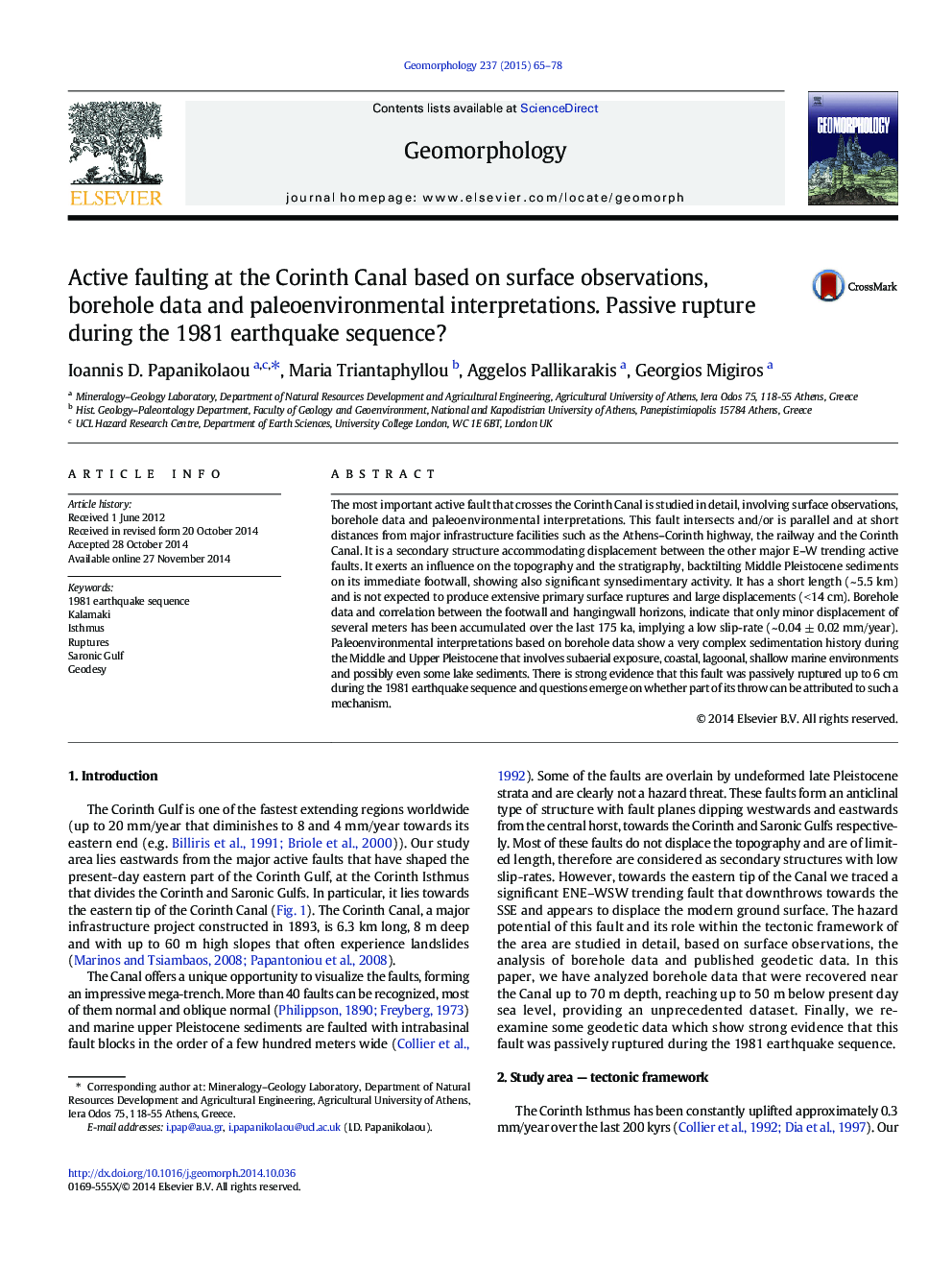| کد مقاله | کد نشریه | سال انتشار | مقاله انگلیسی | نسخه تمام متن |
|---|---|---|---|---|
| 6432217 | 1635412 | 2015 | 14 صفحه PDF | دانلود رایگان |
- Detailed study of the most important active fault in the Corinth Isthmus area.
- Re-evaluation of the geodetic data shows that it ruptured passively up to 6Â cm in 1981.
- Unprecedented data from boreholes up to 50Â m below present day sea level.
- Paleoenvironmental analysis shows a complex sedimentation in Mid-Late Pleistocene.
- Pioneer use of paleoenvironmental indicators for extracting the slip-rate info.
The most important active fault that crosses the Corinth Canal is studied in detail, involving surface observations, borehole data and paleoenvironmental interpretations. This fault intersects and/or is parallel and at short distances from major infrastructure facilities such as the Athens-Corinth highway, the railway and the Corinth Canal. It is a secondary structure accommodating displacement between the other major E-W trending active faults. It exerts an influence on the topography and the stratigraphy, backtilting Middle Pleistocene sediments on its immediate footwall, showing also significant synsedimentary activity. It has a short length (~ 5.5 km) and is not expected to produce extensive primary surface ruptures and large displacements (< 14 cm). Borehole data and correlation between the footwall and hangingwall horizons, indicate that only minor displacement of several meters has been accumulated over the last 175 ka, implying a low slip-rate (~ 0.04 ± 0.02 mm/year). Paleoenvironmental interpretations based on borehole data show a very complex sedimentation history during the Middle and Upper Pleistocene that involves subaerial exposure, coastal, lagoonal, shallow marine environments and possibly even some lake sediments. There is strong evidence that this fault was passively ruptured up to 6 cm during the 1981 earthquake sequence and questions emerge on whether part of its throw can be attributed to such a mechanism.
Journal: Geomorphology - Volume 237, 15 May 2015, Pages 65-78
